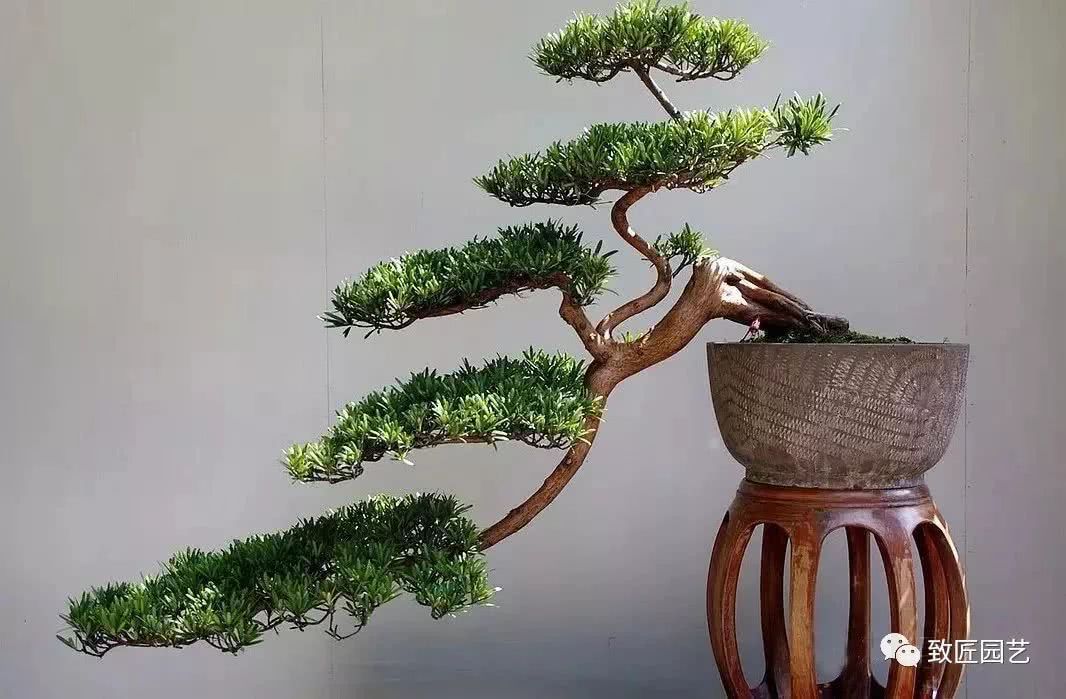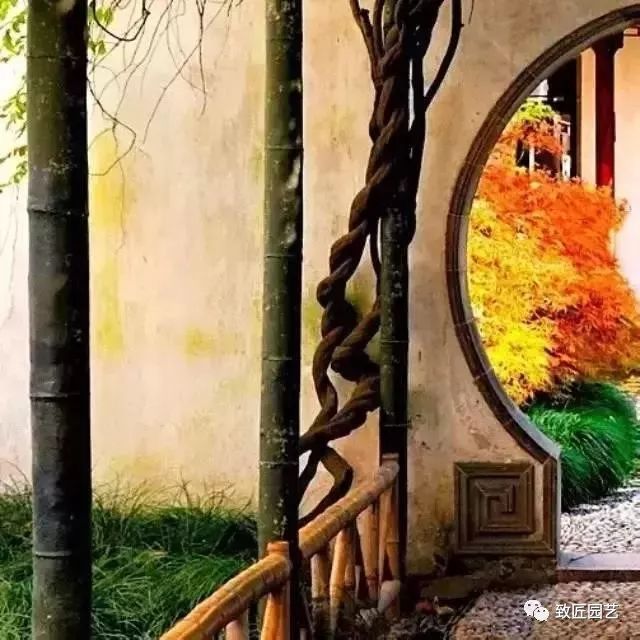Practical information: the basic method of bonsai grafting

Grafting of bonsai trees is a modeling method. Through grafting, not only excellent bonsai wood can be obtained, but also the forming speed of bonsai can be accelerated and twice the result with half the effort can be achieved. Grafting can also be used to replenish roots, branches and change crowns to make the shape of bonsai trees more perfect.
To master the time of grafting, the general temperature is 20-25 degrees, when the cambium cells are the most active, which is conducive to the survival of grafting. The scion should choose the excellent mother tree with strong growth, no diseases and insect pests, small leaves and strong affinity, preferably nutrient branches with abundant tissue. The closer the relationship between the scion and the rootstock is, the easier it is to survive.
I. Bud grafting
Bud grafting is a method of taking buds from scions for grafting. In the process of bonsai modeling, bud grafting can improve the crown and can also be used as a remedial measure for branch grafting. Its advantage is that several panicle buds are grafted on the twigs of the rootstock. After survival, according to the density requirements of the shape, and then cut the choice. Some tree species with thicker skin can be improved by bud grafting. Such as wild peach bud grafting peach. Wild plum pile bud grafting plum blossom, wild rose old root bud grafting floret rose and so on. There are many methods of bud grafting, such as T-shaped bud grafting, I-shaped bud grafting, embedded bud grafting, nested bud grafting and so on. The best time for bud grafting is when the sap flow is exuberant and the bark and xylem are easy to peel off from July to August. Budding should be carried out in the morning and evening to avoid rainy days. 4-5 days before budding, rootstocks should be loosened, fertilized and watered to promote the flow of sap to facilitate peeling. The branches and leaves of the budding position of the rootstock need to be cut off before grafting in order to facilitate the operation. In order to find the skin of the bud grafting part of the rootstock, it is smooth and smooth, and the scion bud is not only ideal, but also full of axillary buds. Because the climate of bud grafting is dry and the water in the cutting place is easy to evaporate, take buds and buds in one fell sprout as far as possible.
Second, branch grafting
Select annual branches or new shoots of the same year as scions, which are called branch grafting on the rootstock. The commonly used branch grafting methods are split grafting, cutting grafting, ventral grafting and leaning grafting. The time of branch grafting should be within half a month when the trees have just sprouted in early spring, and choose sunny days rather than rainy days. The method adopted can be determined according to the specific circumstances. in general, when the diameter of the rootstock is larger than the scion or when the rootstock is stout, split grafting or cutting can be used, such as begonia, peach, pomegranate, wax plum, spring plum, banyan tree, sweet-scented osmanthus, etc., while pine and cypress can choose ventral grafting method, because this kind of tree species must retain branches and leaves in order to survive. However, some precious tree species which are not easy to survive by grafting need to adopt the method of relying on grafting.
Third, root connection
The ideal root type can often be obtained when digging stumps in mountain fields or cutting plants in pots, and root grafting can be adopted to change crowns. When turning the basin and transplanting in March, the well-shaped roots were washed in water, the antler roots and excess lateral roots were cut off, and the crown was changed by splitting or cutting according to the thickness of the roots. Take 1-2-year-old branches of the same tree species as scions, retain 2-3 buds, after grafting, loosen the binding and gradually expose the roots, and get a new pile scene.
IV. Pruning
When a bonsai lacks branches, it can be planted with branches of the same genus as those of the same genus outside the body, and the method of grafting can be adopted to replenish the branches. In the branch-deficient part, the transverse cutting pit is lip-shaped and deep to the xylem, and the length and depth of the incision should be in good agreement with the grafting cutting surface. Then the selected T-shaped T-shaped joint is cut into a shape consistent with the cut of the rootstock, and then Ding Anzhi is leaned against the potholes of the upper pruning, aligned with the cambium and solid with ribbons.
Fifth, fill the root
When digging graceful stumps in the mountains, they often appear to be inadequate because of the lack of roots. The missing root can not induce the new root, so the method of connecting the root can be adopted to fill the root. In the tree growing season, the thickness, size and direction of the roots of the same kind of seedlings should basically meet the needs of the lack of roots of the rootstocks. Dig them up and cut off all the lateral roots and some branches and leaves except the main roots. Keep the bud point as far as possible against the interface, and when the upper end of the seedling is cut off after the interface is healed, keep the bud point as a branch to promote the wound healing, and when cutting off the upper end of the graft, keep the bud point as a branch to promote wound healing.
Wonderful content
- Prev

The whole hospital was at a loss as to what to do. The intern unexpectedly saved the dying patient from death.
Intern Qingyuan first people's Hospital. 8 o'clock is the time when the inpatient department of the hospital is busy. Often at this time, the doctor will make rounds and ask about the condition of the patient yesterday, which is recorded. It's summer, and it's often the time for interns.
- Next

The Beauty of Garden: all kinds of Garden Cave doors
Dongmen plays a very important role in the spatial treatment of Chinese gardens. The infiltration and flow of space can be formed through the openings of doors and windows, so as to achieve the function of scenery in the garden, scenery in the garden, moving and changing scenery, and at the same time create a courtyard frame.
Related
- Wuhan Hospital Iron Tree Blooming Result Was Instantly Frightened by the Gardener Master
- Which variety of camellia is the most fragrant and best? Which one do you like best?
- What is the small blue coat, the breeding methods and matters needing attention of the succulent plant
- Dormancy time and maintenance management of succulent plants during dormancy
- Minas succulent how to raise, Minas succulent plant pictures
- What are the varieties of winter succulent plants
- How to raise succulent plants in twelve rolls? let's take a look at some experience of breeding twelve rolls.
- Attention should be paid to water control for succulent plants during dormant period (winter and summer)
- Watering experience of twelve rolls of succulent plants
- Techniques for fertilizing succulent plants. An article will let you know how to fertilize succulent plants.

